Tha La fish market (Cay Cham hamlet, Vinh Te commune, Chau Doc city, An Giang province) is also known as the "ghost" market because it operates at night, buyers and sellers are busy but cannot see each other's faces clearly. We accidentally learned about this special market on our journey to explore the rivers of the West. Dong Cay Dau is a small hamlet in Nuoc Giap village, Ba Kham commune, Ba To district (Quang Ngai). There are about 100 people who are Hre ethnic people living here for decades, but there are no roads, no electricity and no clean water for daily use. The difficult life continues day after day, month after month. The desire for roads, electricity, unified management of household registration, household registration and land... to stabilize life has been a practical aspiration of the people for many years now but has not yet come true. During the question and answer session on the banking sector at the 8th Session of the 15th National Assembly, Governor of the State Bank Nguyen Thi Hong answered questions from National Assembly deputies regarding credit policies, especially policies related to National Target Programs (NTPs). Dong Cay Dau is a small hamlet in Nuoc Giap village, Ba Kham commune, Ba To district (Quang Ngai). There are about 100 people who are Hre ethnic people living here for decades, but there are no roads, no electricity and no clean water for daily use. The difficult life continues day after day, month after month. The desire to have roads, electricity, unification in household registration, household registration and land management... to stabilize life has been a practical aspiration of the people for many years now but has not yet come true. The Central Office for New Rural Area Coordination said that after the meeting of the Council for evaluating and classifying products of the One Commune One Product (OCOP) Program at the central level, the second phase in 2024, the Council recognized 5 more products that have achieved national OCOP certification in the group of medicinal herbs and medicinal products. Tha La fish market (Cay Cham hamlet, Vinh Te commune, Chau Doc city, An Giang province) is also known as the "ghost" market because it operates at night, buyers and sellers are busy but cannot see each other's faces clearly. We happened to know about this special market on our journey to explore the rivers of the West. Sutras written on palm leaves have existed for a long time and are famous not only in the Bay Nui area, An Giang province but also in the Mekong Delta region. This heritage is preserved and promoted by the Khmer people in An Giang. Currently, the only person in An Giang province who fully masters the technique of writing on palm leaves is Venerable Chau Ty (82 years old, abbot of Soai So pagoda, Nui To commune, Tri Ton district). Venerable, Prestigious person Chau Ty is the 9th generation successor of the head monk of Xvay Ton pagoda. After more than 3 years of implementing the National Target Program on socio-economic development of ethnic minority and mountainous areas for the period 2021-2030 (National Target Program 1719), with the participation of the entire political system, the appearance of ethnic minority and mountainous areas in Quang Nam province has gradually changed, many localities are on the rise every day. The summary news of the Ethnic and Development Newspaper, on November 8, has the following notable information: Many attractive activities at the "Great Unity of Ethnic Groups - Vietnamese Cultural Heritage" Week. Fascinated by the highlands of Ky Son. A Mlun's shining example. Along with other news in ethnic minority and mountainous areas. Closely following the direction from the Central and the province, the Vinh Phuc Ethnic Committee is continuing to promote propaganda work on key tasks for ethnic minority and mountainous areas in the last months of 2024. Thereby contributing to raising awareness, perception and responsibility of people in ethnic minority and mountainous areas in implementing the Party's guidelines, policies and laws of the State, promoting socio-economic development, improving people's lives. In order to contribute to supporting people in provinces affected by storm Yagi (storm No. 3) to restore production and stabilize their lives, the Red Cross Society of Vinh Phuc City. Ho Chi Minh donated 600 breeding cows to the people of 4 provinces: Lao Cai, Yen Bai , Cao Bang, Thai Nguyen. Located at the Northeastern gateway of the country, Lang Son has many favorable natural conditions, a culture imbued with national identity, and a system of valuable tangible and intangible cultural heritages of ethnic minorities. These are the strengths that promote Lang Son's tourism industry to develop to a new level. However, for Lang Son tourism to truly "take off", these potentials - "treasures" need to be exploited on a larger and more systematic scale. On November 11, at Vinh Phuc Provincial Theater, the Vinh Phuc Provincial Ethnic Minorities Committee coordinated with the Department of Education and Training to organize the "Ceremony to honor outstanding ethnic minority teachers and students in the 2023 - 2024 school year". The production development support project (Sub-project 1 - Project 3) under the National Target Program (NTP) on sustainable poverty reduction implemented in Thai Nguyen province has been bringing positive signals, through the project implementation funding source, helping many households have the conditions to develop production, increase income, and have more opportunities to escape poverty.
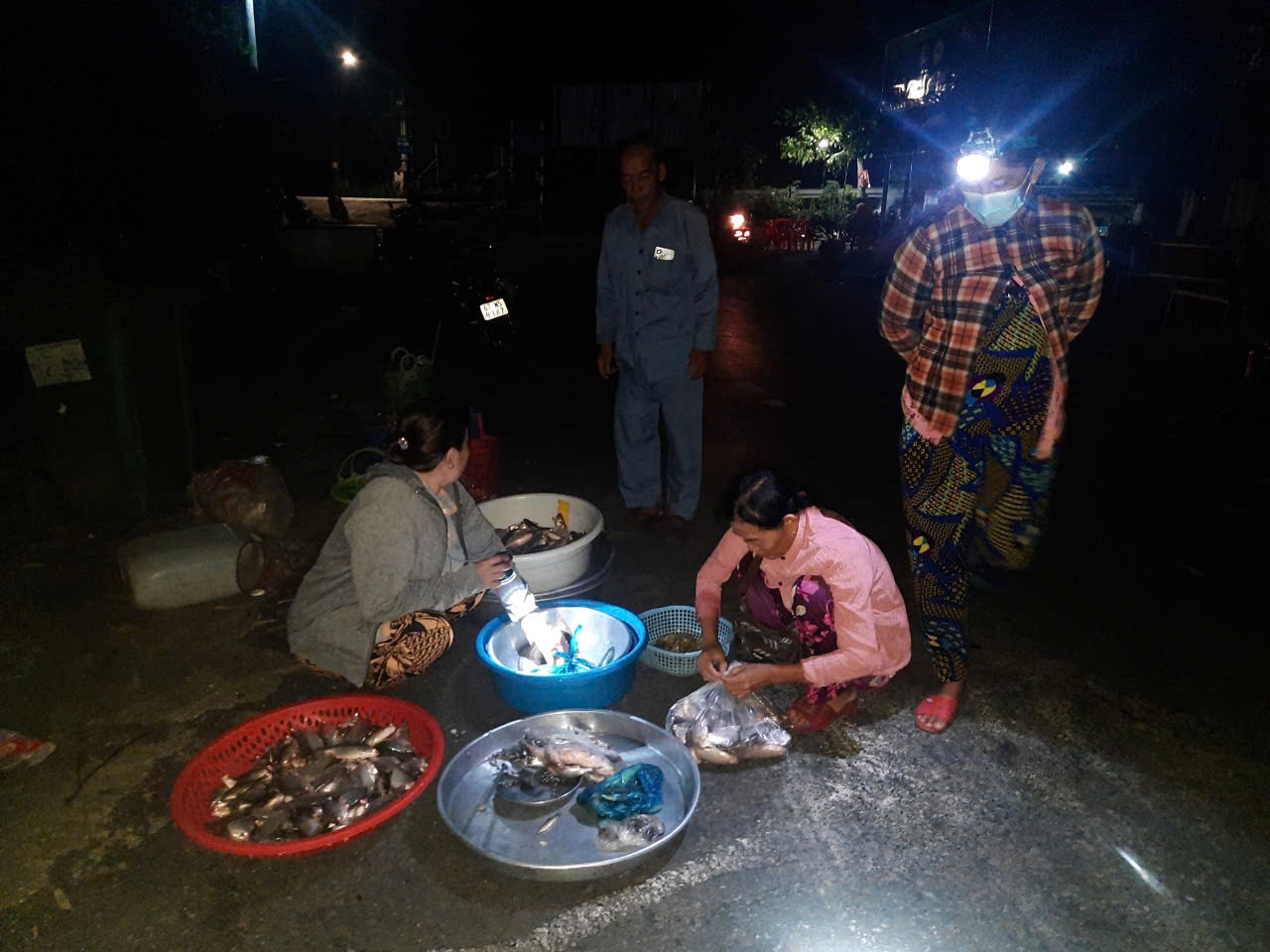
Buyers and sellers cannot see each other clearly.
Every year, from around July to the end of October of the lunar calendar, the West enters the flood season, bringing with it alluvium and many natural products. That is also the time when the "ghost market" Tha La - the largest freshwater and river fish market during the flood season at the border source in An Giang becomes bustling.
The market is located on a 50m stretch of Cay Cham Street, below Tha La Bridge. At around 3am, Tha La Market begins to gather, and after a night of fishing, fishermen will bring their catch here to sell.
In the dark of night, the sound of motorboats rattling from the distant fields heading towards the market wharf, the traders gathered around, asking the boat owners what kind of fish they caught late at night.
Unlike other markets, sellers and buyers at Tha La market usually prepare their own flashlights to look at their goods. In a squatting position, buyers use spotlights to select the fish and eels they want to buy, then weigh each type and pay the fishermen.
The scene of buying and selling fish on each boat only takes about 20 - 30 minutes, after that, the "silvermen" do not rush home immediately but sit at the small stalls next to the market to sip coffee, eat a plate of broken rice or a loaf of bread as a habit. As for the traders, they leave the market to bring fish to neighboring localities to resell for profit.
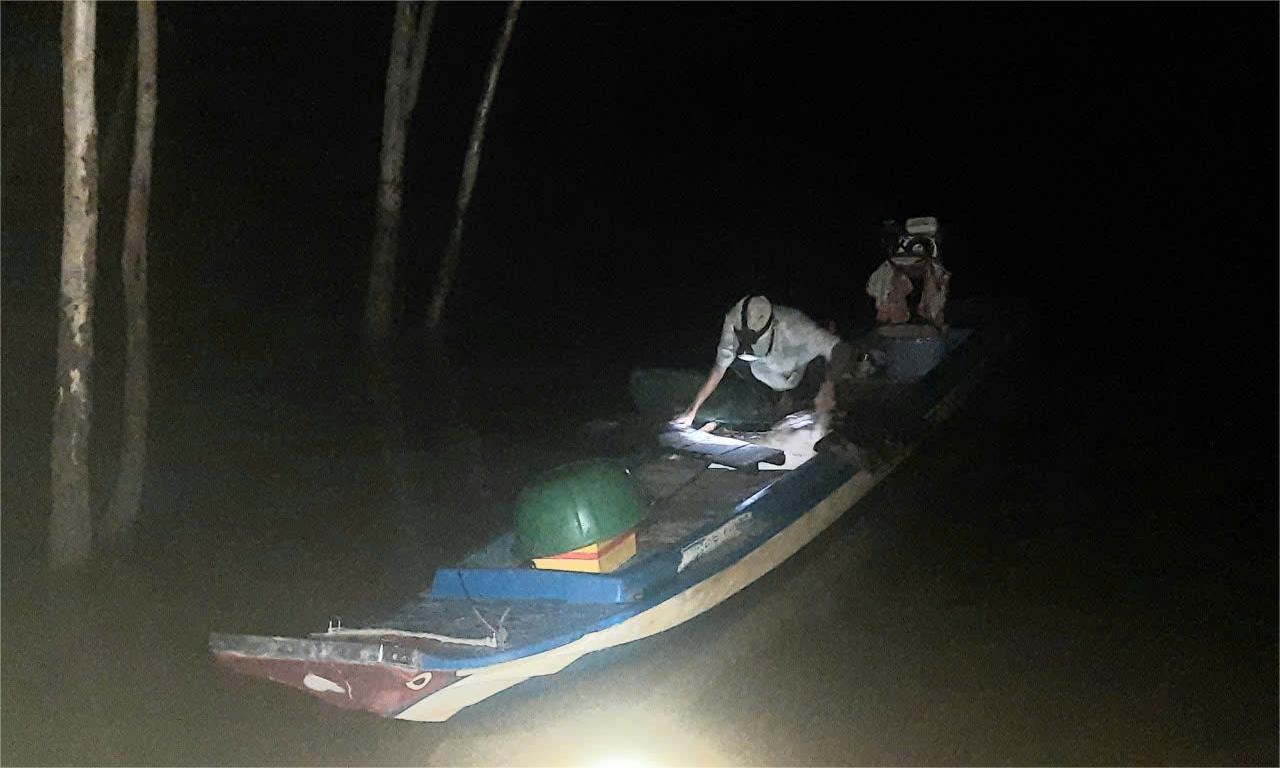
We followed Ms. Nguyen Thi Huong (54 years old, living in Phu Hoa hamlet, An Phu commune, Tinh Bien district) to Tha La market early to choose fish. With 15 years of experience buying fish at Tha La market to sell in other regions, Ms. Huong's hands quickly chose the freshest fish, and said: "At night, I go to Tha La market to choose and buy, and in the morning, I go to another market to sell. The unique feature of Tha La market is that it only meets at night, but is always favored by small traders who stop by to drop off their goods ."
Tha La Market sells all the “specialties” of the flood season such as: linh fish, snakehead fish, perch, chot fish, thieu fish, khoai fish, long tong fish, eels, loaches… caught by people in flooded fields such as: Thoi Son, Nhon Hung (Tinh Bien town), Vinh Te (Chau Doc city)…
Ms. Mai Thi Ha, a vendor at the market, proudly boasts about her family's 30-year-old traditional profession: "In the past, Tha La River used to catch 10 tons of fish in one night. My family has 11 children who have all been fishing for 30 years. When the fish season comes, it's a joy to bring a lot of fish to the market, it's our profession."
Mrs. Ha said that Tha La market was formed 30 years ago, when people living along the canal and making a living by catching local seafood gathered spontaneously. At first, there were only a few people selling garden vegetables, water lilies, fish and shrimp. Gradually, the number of traders increased and the market became more and more crowded. Thanks to this market, people who sell fish do not have to work hard to transport fish far away.
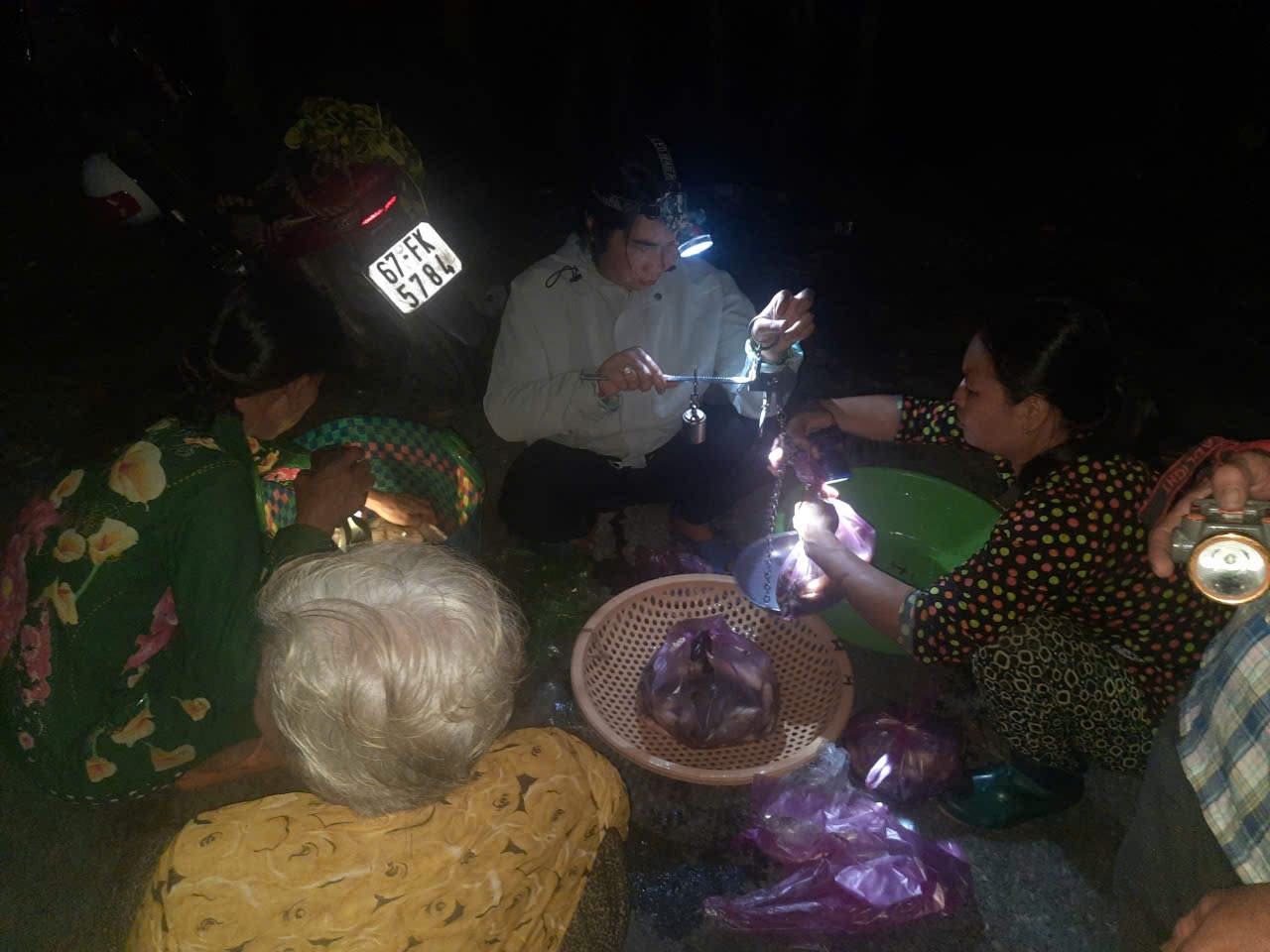
Preserving the soul of the Western fish market
While chatting enthusiastically, Ms. Mai Thi Ha's voice suddenly dropped when she thought about the "golden age" of Tha La market. "In the past, every night at Tha La market there were up to 100 boats and canoes catching and selling freshwater fish, but now there are only about 25 boats left. Over time, fish and shrimp are becoming less and less during the flood season. Therefore, instead of only meeting until dawn, now, there are days when the market "breaks the rules" and meets until 8am, to adapt to the "current situation", many people boldly sell more rustic cakes, pork, and vegetables ", Ms. Ha Ke said.
According to Ms. Ha, over the past few decades, many of the “fishermen” of Tha La have given up their silver-making profession and left their hometowns to work as laborers in Binh Duong . Those who are deeply indebted to the “ghost” market remain and look forward to the special market sessions filled with fish and shrimp of the past.
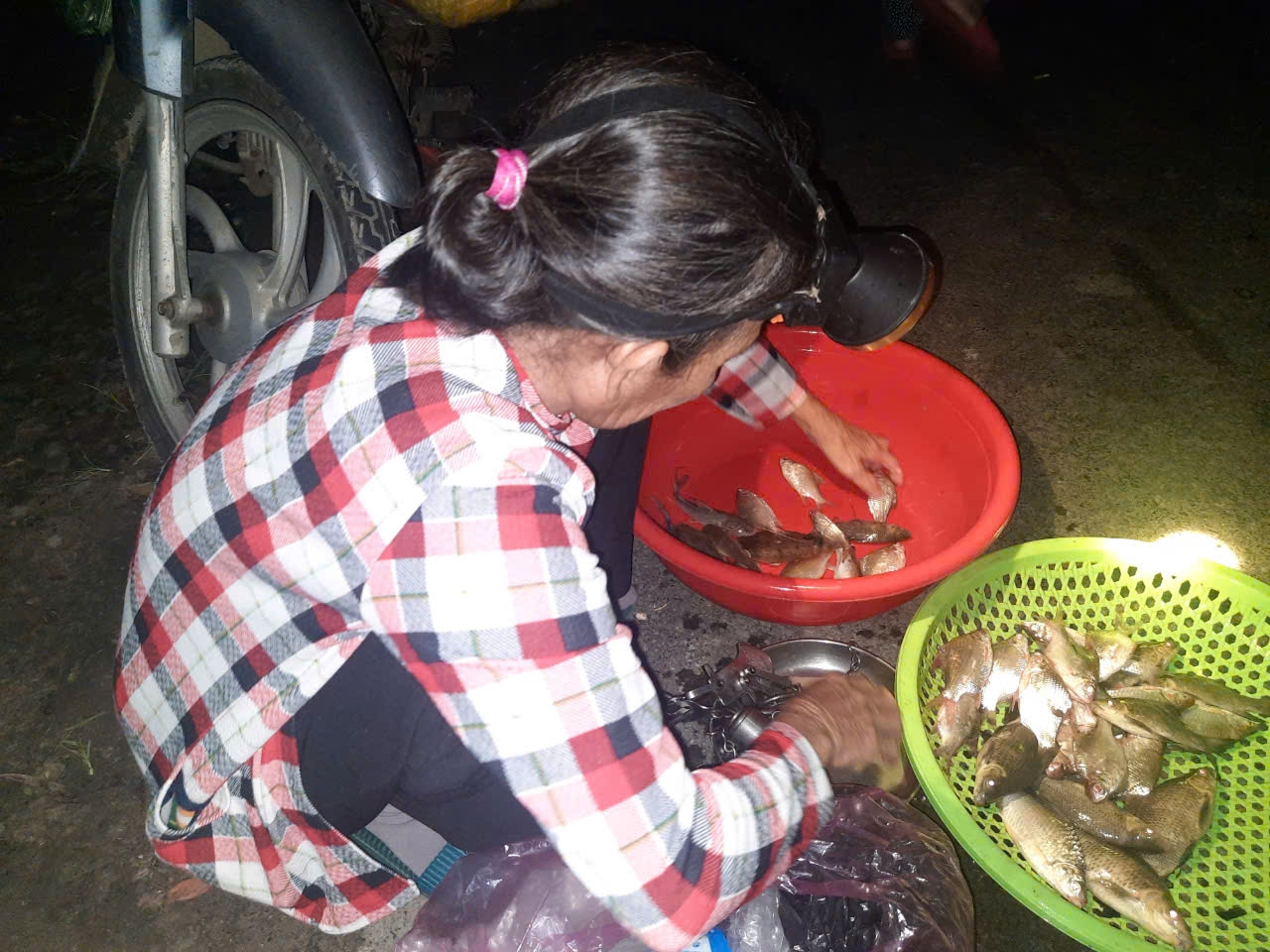
Every day, Le Van Phuc and his wife (living in Chau Doc city) also come here early to choose fresh fish to bring back to big markets in Chau Doc and Long Xuyen to sell to customers for a little profit. "We have to go early to get fresh and delicious fish, if we go late there will be no fish to choose from, it will be harder to sell when we bring it back. After doing business for a long time, everyone gets to know each other, buying and selling without having to bargain much," said Phuc.
According to Mr. Phuc, before he had to go by truck to buy tons of fish every night, but now, every night he can only buy nearly a hundred kilograms of various types of fish, mainly specialties of the flood season to supply to some customers in Can Tho and Ho Chi Minh City.
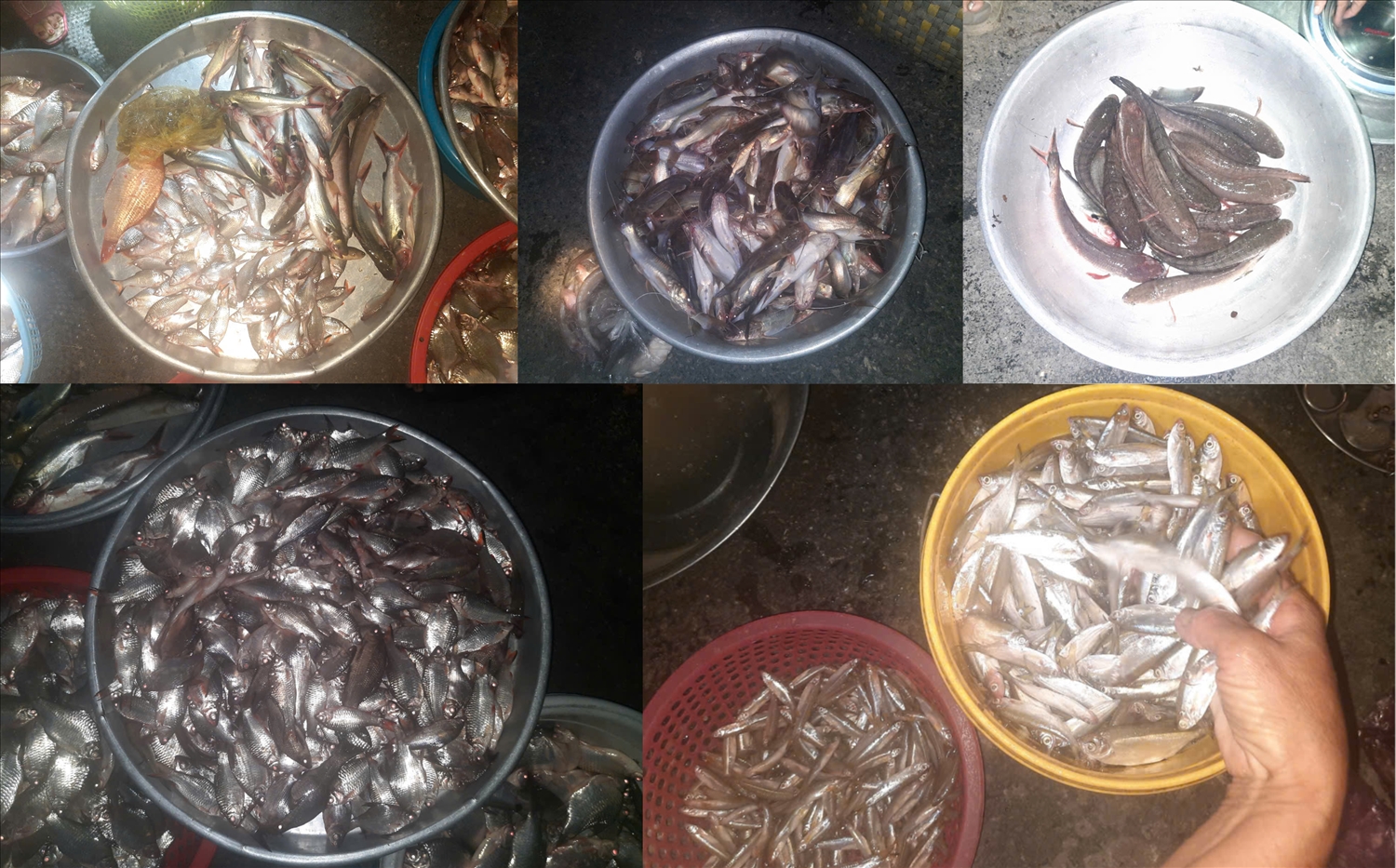
Having spent his whole life in the "fishing" profession, Mr. Nguyen Van Tai (residing in Nhon Hung ward, Tinh Bien town) cannot help but recall the "happy fish-catching days" of the old flood season.
"This year, the floodwaters inundated the fields nearly a meter high, and fish and shrimp also followed. Net fishermen like me have a little more money to spend on our families and our children's education. However, compared to the amount of fish and shrimp during the flood season in the past, there are not as many fish and shrimp now," Mr. Tai confided.
For the “fishermen” of the Mekong Delta, as long as there is water, there will be fish. And as long as there are fish and shrimp, the Tha La market will still be bustling at night. When dawn comes, the farmers have finished selling their fish, their eyes and noses stinging from lack of sleep, leaving the Tha La market, disappearing after a night of white fog and wind. The work is hard, but it is the profession they earn a living, and it also contributes to preserving the soul of the Western market.
Source: https://baodantoc.vn/mot-dem-o-cho-am-phu-tha-la-1731309103383.htm





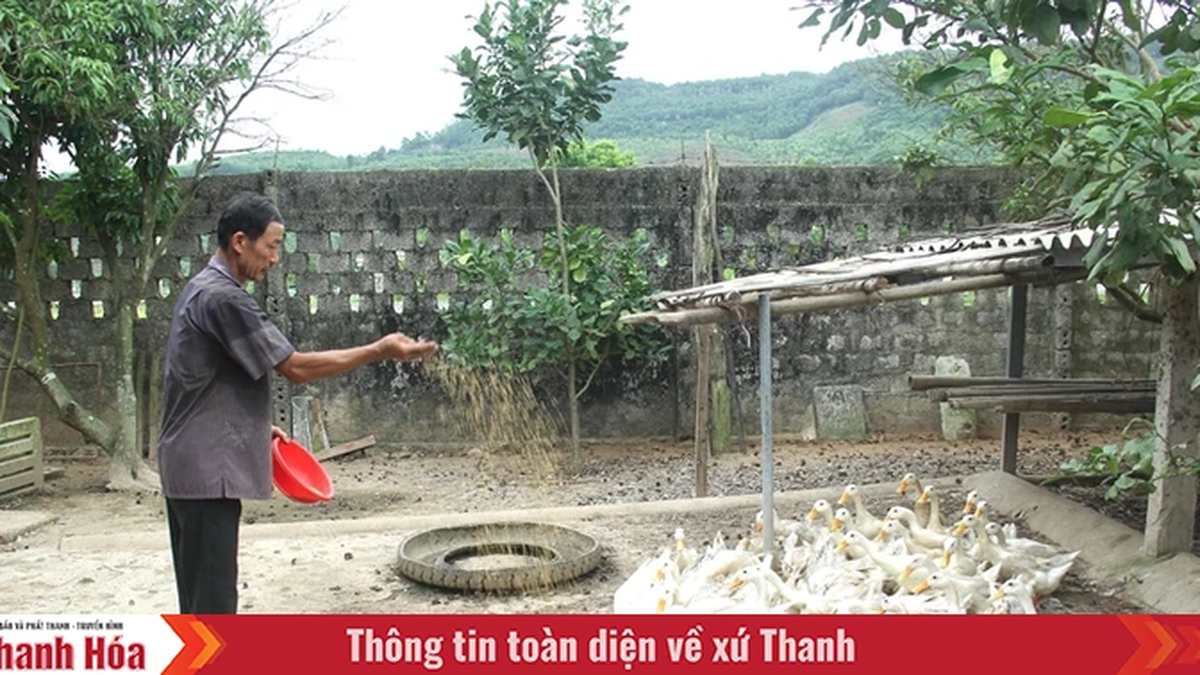

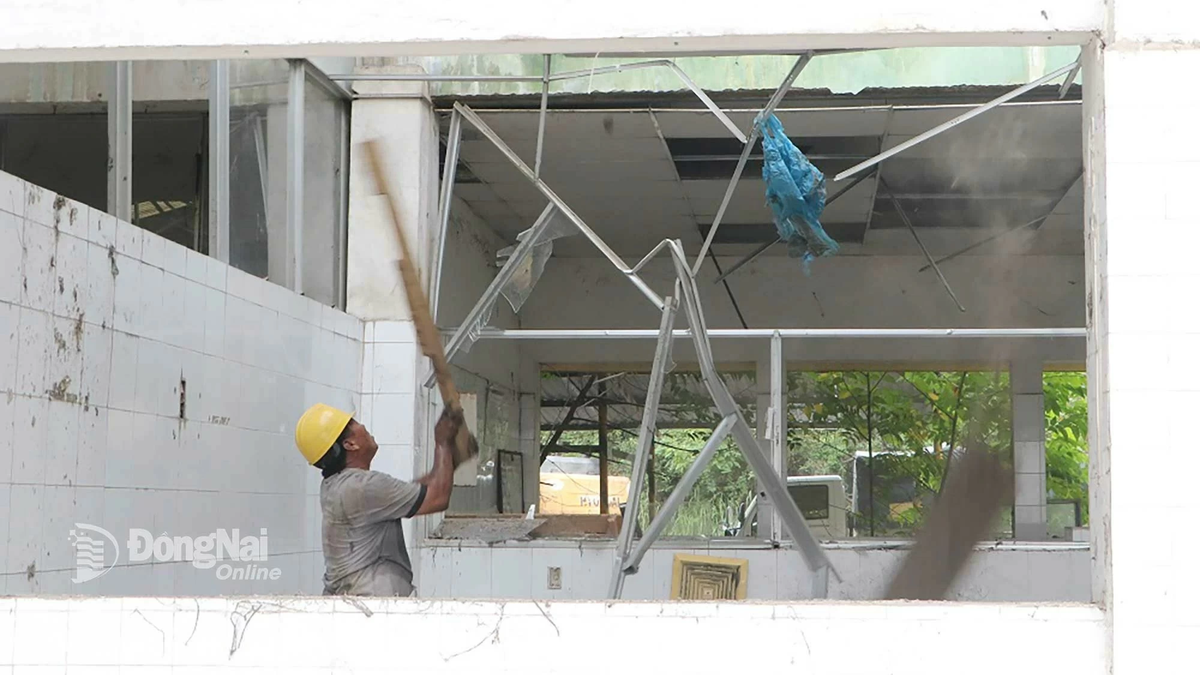



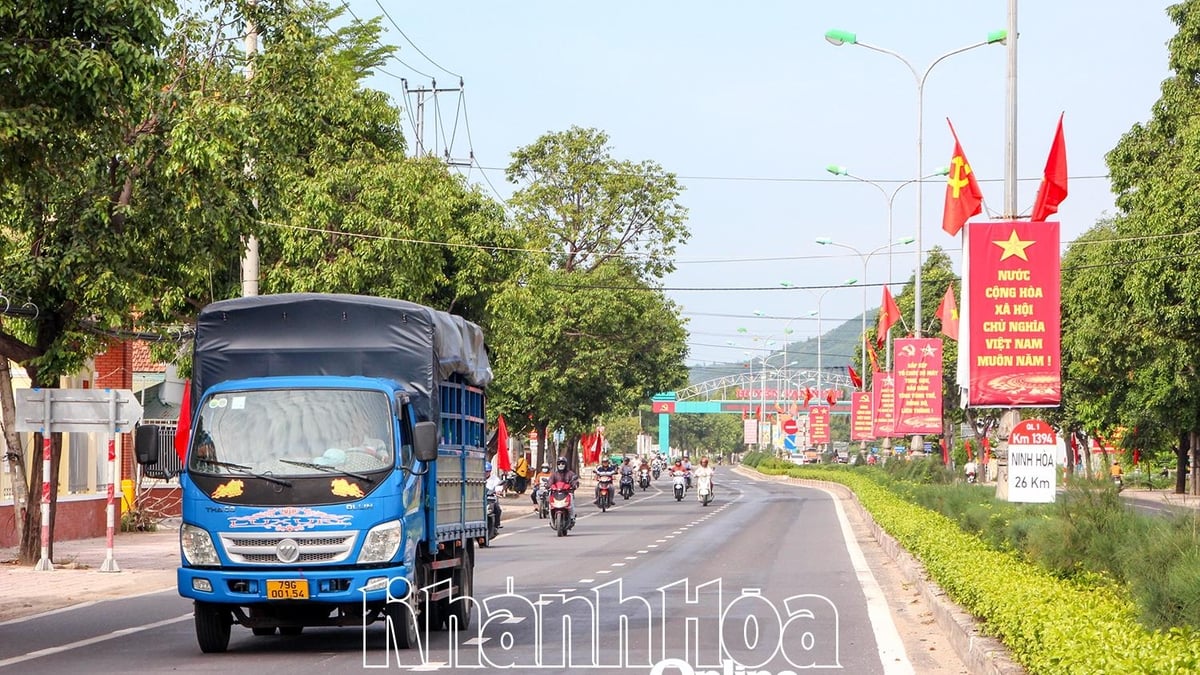












































![[Maritime News] Container shipping faces overcapacity that will last until 2028](https://vphoto.vietnam.vn/thumb/402x226/vietnam/resource/IMAGE/2025/7/30/6d35cbc6b0f643fd97f8aa2e9bc87aea)









































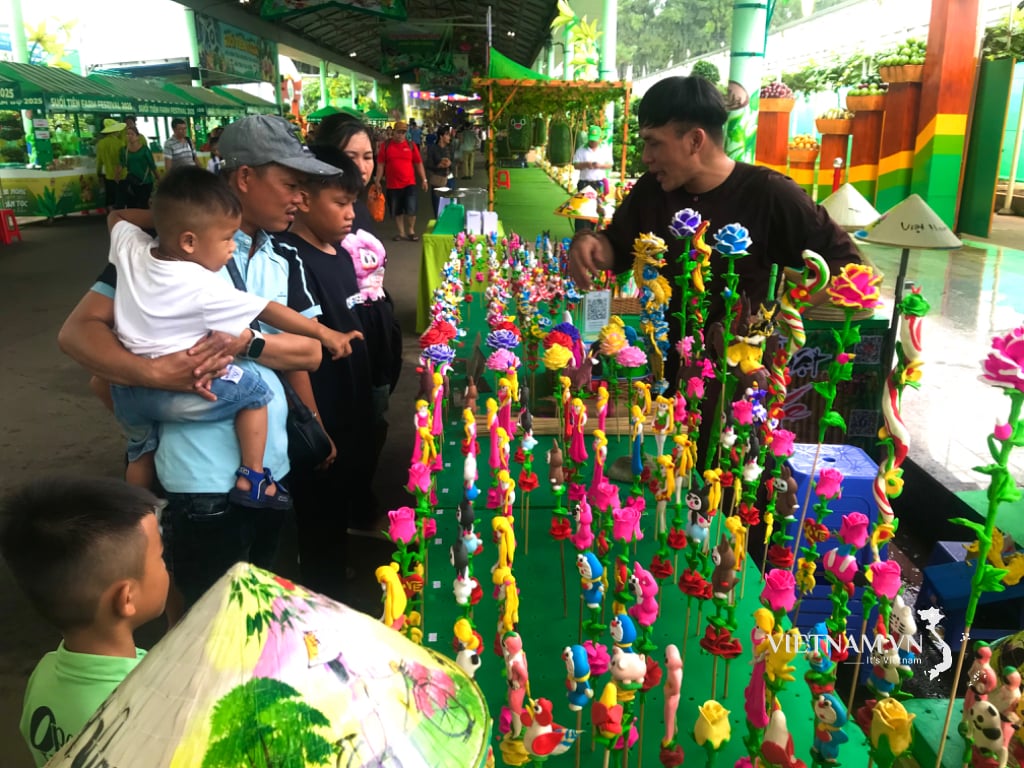



Comment (0)